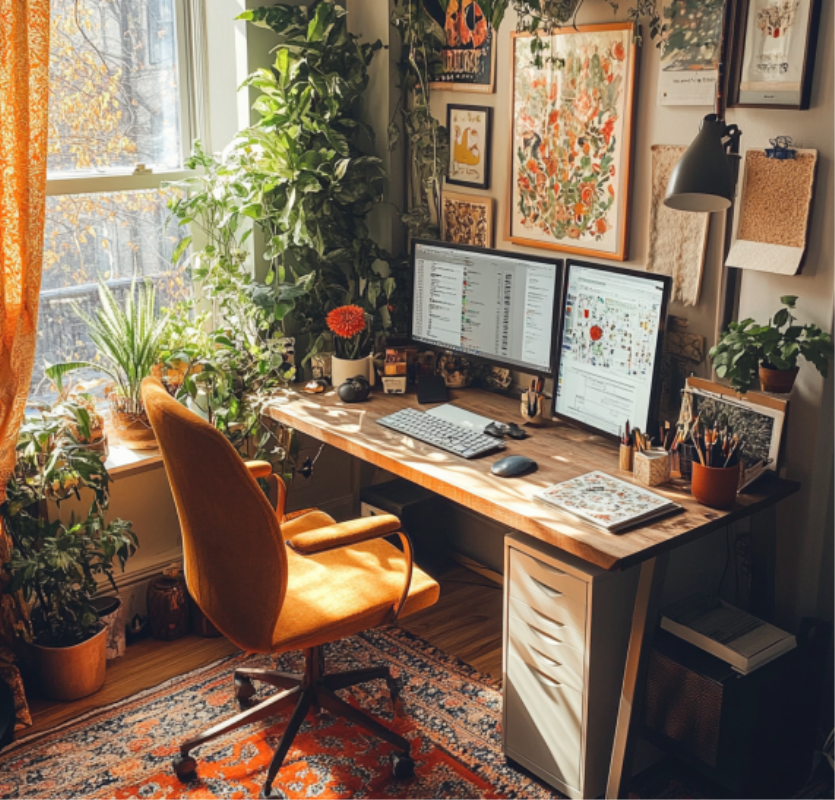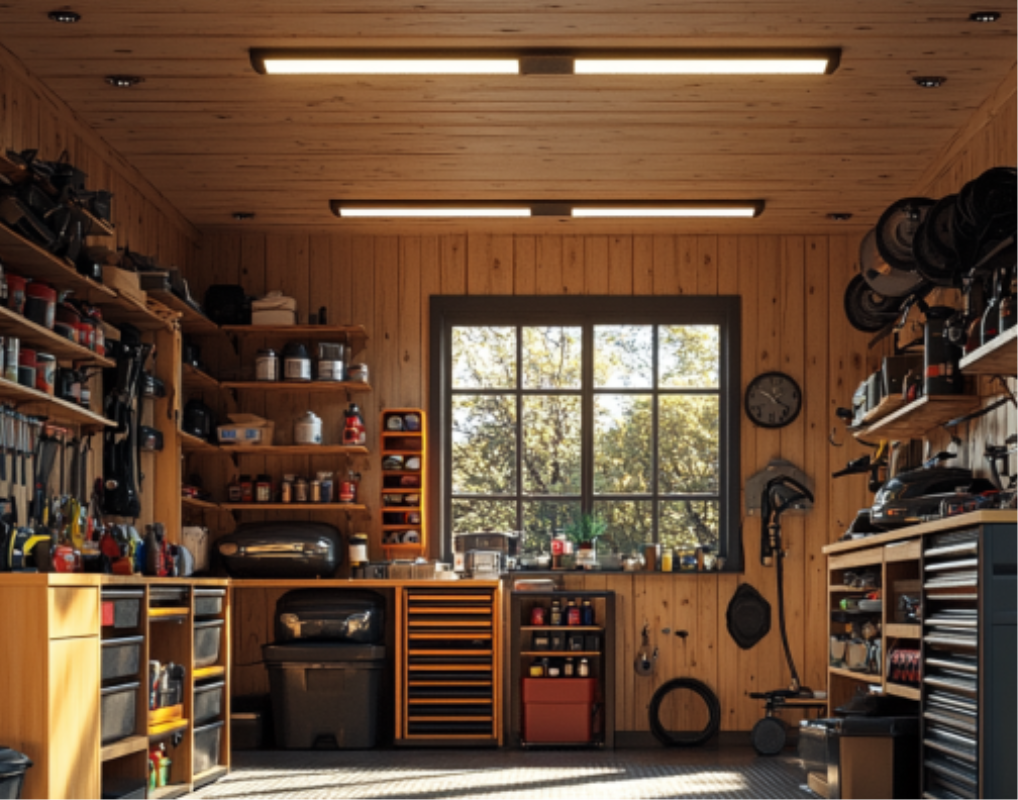Working from home can be both a blessing and a challenge. While it offers flexibility and time-saving perks, blurring the lines between work and personal life can lead to burnout and decreased productivity. The good news? A well-thought-out home setup can help you balance your work responsibilities and personal time. Here’s how you can create a dedicated workspace to enhance focus, set boundaries, and enjoy a healthier work-life balance.
Why a Dedicated Workspace Matters
A distinct workspace does more than simply give you a spot to park your laptop. It creates a mental division between “work mode” and “home mode,” making it easier to switch gears at the end of the day. By designing a setup that’s functional and comfortable, you’ll not only boost productivity but also improve your overall well-being.
Benefits Include:
- Reduced Distractions: Having a specific spot for work helps you stay focused on your tasks and minimize interruptions.
- Improved Productivity: A purposeful environment encourages you to tackle projects efficiently and effectively.
- Enhanced Mental Health: When you can physically leave your workspace at the end of the day, it signals your brain to relax and unwind.
- Clearer Boundaries: Separating work from personal life prevents work from intruding into family time and vice versa.
How to Create Your Ideal Home Workspace
1. Choose the Right Location
Selecting where to set up your workspace is the first step. Ideally, it should be a quiet area with minimal foot traffic and distractions. If you have a spare room, that’s a great option, but if space is limited, carve out a corner in your bedroom, living room, or even under the stairs. Just ensure it’s removed from your main relaxation or socializing hubs.
2. Invest in Ergonomic Furniture
Comfort is key when you’re spending hours at a desk. An ergonomic chair and a height-adjustable desk can make all the difference in supporting good posture and reducing physical strain. Don’t forget accessories like a monitor stand, keyboard tray, or footrest, depending on your needs.
3. Light It Up
Good lighting can have a huge impact on your productivity and mood. Natural light is ideal, so position your workspace near a window, if possible. If that’s not an option, invest in a quality desk lamp that provides bright, even light to reduce eye strain.
4. Add Personal Touches
While functionality is important, don’t forget to make your workspace inviting. Add personal touches that spark joy, such as a framed photo, a plant, or a piece of artwork. These elements create a warm, motivating atmosphere while still maintaining professionalism.
5. Declutter and Organize
Clutter can be distracting and stressful. Keep only the essentials on your desk and use organizers, shelves, or file cabinets to manage papers and supplies. A clean, orderly space promotes focus and makes you feel in control.
Setting Boundaries for Work-Life Balance
A great workspace is only part of the equation. To truly achieve balance, it’s essential to establish boundaries that protect your personal time while keeping your work hours productive.
1. Set a Schedule
Define clear work hours and stick to them. Start and end your day at consistent times, and communicate these boundaries with both coworkers and family members.
2. Take Regular Breaks
Working from home doesn’t mean you should skip breaks. Aim for short, frequent pauses to stretch, hydrate, and recharge. A timer or app can help you stay on track.
3. Minimize Distractions
Turn off notifications, close unnecessary tabs, and set up guidelines for family or roommates to signal when you’re not to be disturbed. Simple strategies like noise-canceling headphones can also help you stay focused.
4. Log Off at the End of the Day
When the workday is done, log out of your work accounts, shut your computer, and leave your workspace. This physical act of “leaving” your office helps you mentally detach from work.
Reap the Rewards of Balance
Working from home has its challenges, but with a dedicated setup and strong boundaries, you can enjoy the best of both worlds. A workspace that’s functional, comfortable, and uniquely yours will enhance your productivity and safeguard your time. By designing a setup that works for you, you’re investing in your happiness and well-being—both during and after work hours. Start small, make adjustments as you go, and watch how your perfect balance falls into place.







